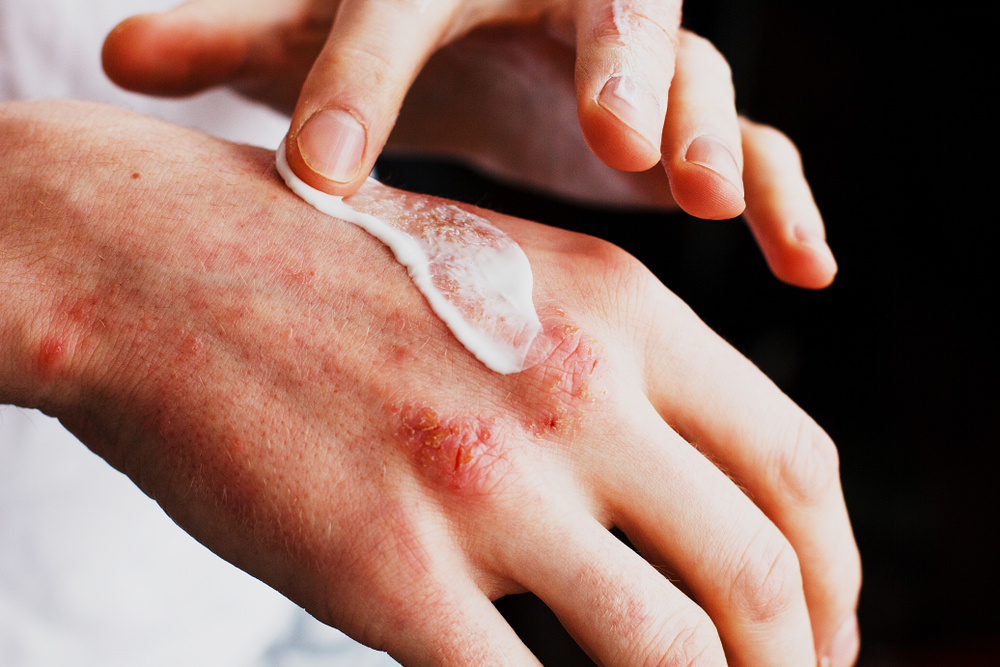Is it still extreme dryness of the skin or already neurodermatitis? We will inform you about the symptoms of the clinical picture of neurodermatitis.
About 10-20 percent of children and one to three percent of adults in the USA suffer from neurodermatitis. Neurodermatitis is a chronic or chronically recurring skin disease (medically also known as atopic eczema, atopic dermatitis), which occurs in phases. Typical signs of neurodermatitis are dry skin, itching, redness, inflammation and changes in the skin, which can occur on the face, body and scalp (primarily the bends of the arms and the back of the knees as well as in the neck and facial area).
Neurodermatitis symptoms: This is how you can recognize the skin disease
Neurodermatitis symptoms are manifold. They vary according to the age of the person affected and are also different from person to person. Sometimes they only appear in certain areas of the skin, sometimes large areas of the skin are affected. In addition, the symptoms of neurodermatitis occur intermittently, i.e. phases with extreme skin changes such as redness or itching are followed by periods without signs of the disease.
The following symptoms are always recurring:
- Dry skin: The skin on the face and body is rough, flaky and tight.
- Inflammations: A leading symptom of neurodermatitis is inflammatory eczema.
- Itchy skin: Eczema is accompanied by excruciating itching, which makes the affected persons sleep poorly at night and robs them of their ability to concentrate during the day.
- Redness: Especially the face shows reddened skin areas.
Further symptoms of neurodermatitis are skin thickening and coarsening (so-called lichenification), which occur in the area of the wrists, the crook of the arm and the hollow of the knee, as well as nodules, pustules or weeping blisters.
Neurodermatitis symptoms in children
Neurodermatitis often begins in babies from the third month onwards. A first indication can be hard yellowish brown scales on the scalp, the so-called “milk crust”. Typical symptoms are:
- Redness on the cheeks and scalp
- Flex eczemas in the folds of the back of the knees, elbows and wrists and on the knees when the children begin to crawl
- Inflammations in the oral area
- Inflamed, oozing skin on the eyelids, feet, thighs and bottom
Neurodermatitis symptoms in adults
But also adults suffer from neurodermatitis, which can be noticed by the following symptoms:
- Bending eczema in the back of the knee, the crook of the arm, on the elbow and in the neck
- Eczema on hands and feet
- itchy crusts on the hairy scalp
- reddened, cracked and inflamed edges of the earlobes
- inflamed, itchy skin on the lips
- Burning in the area of the mouth and throat mucous membranes
Further atopy features
In addition to the typical neurodermatitis symptoms, there are other features that are common in people with atopic diseases. These include:
- Dry skin
- Increased line drawing on the inner surfaces of the hands
- Double eyelid crease under the eyes (the so-called “Dennie Morgan crease”)
- Dark skin around the eyes, eye rims (periorbital shading)
- Thinning of the lateral eyebrows (Hertoghe sign)
- Torn ear and mouth corners
- Discoloration of the skin on the side of the neck (“dirty neck”)
Treating neurodermatitis symptoms
Neurodermatitis cannot be cured, but with the right treatment the symptoms of neurodermatitis can be alleviated. However, there is no uniform therapy solution, since neurodermatitis is a complex disease with many individual manifestations. The treatment consists of a multitude of components:
- Basic treatment using lipid replenishing and moisturizing care products, for example fatty ointments or special lotions with urea, glycerine, ceramides and D-panthenol (reduces redness and relieves itching). It is important to choose a cream that is free from preservatives, fragrances, colorings, emulsifiers and paraffin oil.
- Avoid triggers such as stress, wool clothing, dry air
- Medicines for inflammation and itching

